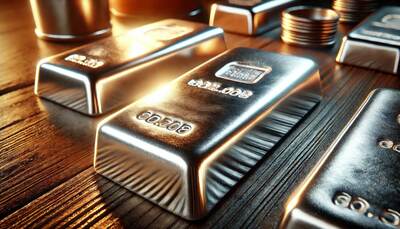In a recent interview with Charlotte McLeod of Investing News, Stefan Gleason, President and CEO of Money Metals Exchange, shared his insights on key trends in the precious metals market, the company’s latest developments, and the increasing role of gold and silver as economic insurance.
Money Metals’ Growth and Expansion
Stefan Gleason, who has over 15 years of experience in the precious metals industry, emphasized the rapid growth of Money Metals since its founding in 2010.
Today, the company ranks among the top three largest precious metals dealers in the U.S. A recent milestone has been the completion of its cutting-edge depository in Eagle, Idaho, now the largest in North America.
Gleason noted, “It’s 40,000 square feet overall, the building and the vaults… there’s actually four massive vaults totaling almost 9,000 square feet, which is twice the amount of vault space that is in Fort Knox.”
While most clients prefer to store their precious metals personally, “A small percentage—maybe 2% to 5%—use depository storage, especially those with larger amounts or those needing more insurance.”
The Idaho facility offers top-tier security, including RFID tracking and dual control audits.
Market Trends: Who’s Buying Gold and Silver?
Gleason explained recent shifts in gold and silver demand, with retail interest slowing since its 2020 surge.
“There’s clearly more demand coming in, but it’s not really coming from North America or Europe. It’s coming from Asia; it’s coming from central banks,” he shared.
Central banks, concerned with geopolitical risks and de-dollarization efforts, have been major buyers of gold.
“We had our best-ever month in March 2023, driven by the regional banking crisis,” Gleason revealed.
However, he highlighted that only around 2% of Americans own physical gold or silver, compared to higher rates in Asia where precious metals are a cultural store of wealth.
Investment Tips: Focus on Gold and Silver
For investors considering precious metals, Gleason advised caution against rare coins or collectibles, as they often come with high premiums.
“The number one thing I encourage people to think about is, what is the melt value of the metal you’re buying? Don’t pay a whole lot more than that,” he stated.
He recommended focusing on low-margin items like gold bars or bullion coins such as Canadian Maple Leafs or American Eagles.
“Why pay more money than you have to for an ounce of gold?” he asked, emphasizing that simpler bullion products often provide better value.
Gleason also highlighted silver’s strong potential:
“Silver is way, way underperforming gold and is still substantially less than its 1980 high… Historically, silver is way undervalued compared to gold.”
Silver’s Breakout Potential
 Silver’s fundamentals remain favorable, according to Gleason, with an ongoing annual production deficit of 200-300 million ounces.
Silver’s fundamentals remain favorable, according to Gleason, with an ongoing annual production deficit of 200-300 million ounces.
“There’s more demand than supply, and it’s been that way for the last two or three years,” he explained. Solar energy, which uses 200 million ounces of silver annually, and emerging technologies like silver-based batteries are key demand drivers.
While the silver market hasn’t yet experienced a breakout, Gleason noted, “It only takes one or two things to unfold and then—boom—another major surge in demand.”
He believes silver’s industrial uses, combined with the tightening supply, will eventually push prices higher.
Sound Money Advocacy and Public Policy
Money Metals Exchange is a leader in sound money advocacy through its work with the Sound Money Defense League. Gleason mentioned their Sound Money Index, which ranks U.S. states based on sound money policies.
Wyoming, South Dakota, and Alaska rank at the top, while California and New Jersey are among the lowest.
Gleason emphasized the importance of removing taxes on precious metals, stating, “We’ve passed about 10 sales tax exemptions in the last 10 years… Some states are also removing the income tax on gold and silver, acknowledging that capital gains on precious metals are more about the devaluation of the Federal Reserve Note than actual gains.”
More states are now also beginning to hold gold as a reserve asset.
“Ohio owns about a billion dollars worth of physical gold in its pension plan, and Utah recently passed a law enabling the state treasurer to hold gold for the state as a reserve asset,” he shared.
This reflects a trend seen among central banks worldwide, as they diversify away from the U.S. dollar.
Conclusion: Opportunities for Companies and Investors
Gleason concluded by advising mining companies to consider holding some of their production as physical gold on their balance sheets.
He highlighted SilverCrest Metals as an example:
“They took about $30 million and put it into physical gold before the price ran up 30%, and now they’re sitting on a great position.”
He also encouraged individual investors to hold physical gold and silver as a hedge against inflation and economic uncertainty.
“The world is not getting safer… Gold and silver are a way to opt out of the system and get financial insurance,” he stated.
As the risks to the dollar become clearer, demand for precious metals is likely to grow.
********




